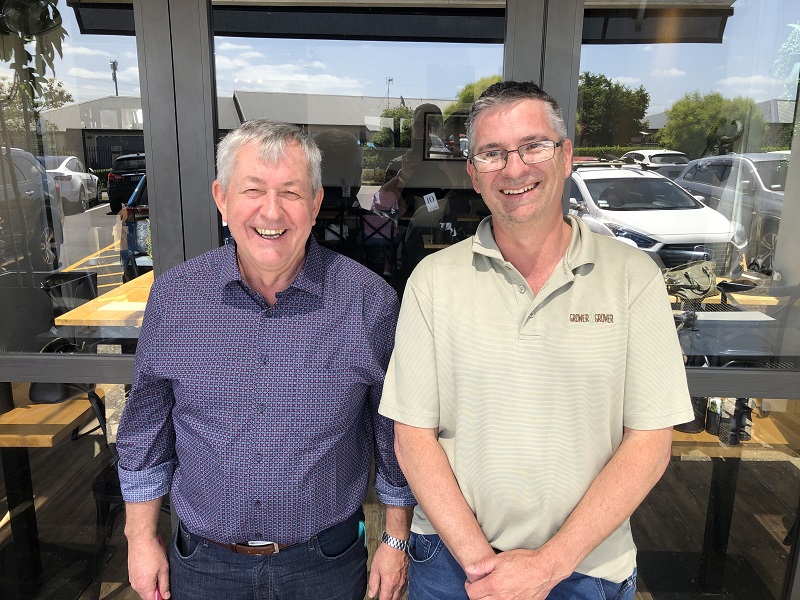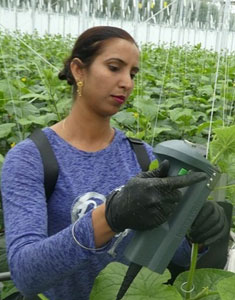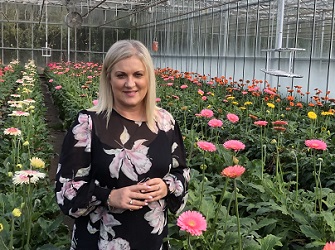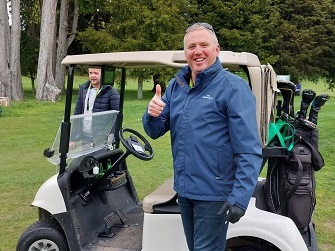Sign up here to subscribe to the Grower2grower Ezine. Every two weeks you will receive new articles, specific to the protected cropping industry, informing you of industry news and events straight to your inbox.
Dec 2023
“If you don’t have a strategy, you don’t have a good crop”

Frank Florus Greenhouse Consultant delivers a superb technical presentation.
Last week Frank Florus, Greenhouse consultant gave a presentation in Pukekohe to growers and suppliers. It was a fascinating presentation that was technical with practical solutions.
Main Topics covered:
- Energy/Humidity/Co2
- Summer Strategy including advice on limiting Blossom End Rot
- Virus and Hygiene
- White Fly
Of the main topics the energy crisis in Europe has had a large impact on production, it is relative to NZ because New Zealand growers face ever increasing energy costs. The critical point, “when trying to cut back on energy, make a cultivation plan before you plant”. Points below:
- If you want to save on energy, your focus in the crop should change from temperature to humidity.
- Less energy results in lower production and/or in lower revenue
- Make a good variety choice with a smart combination with the rootstock.
- Consider a wider plant spacing. Potentially increase plant density later towards spring / summer (week 40 to 46!).
- Reduce your maximum pipe (45° C instead of 55 or 60° C).
- (If you have one) Use the energy screen more and wiser.
- A pyrgeometer or radiation meter can be / is very useful.
- You can make more screening hours if you vent above the closed screen.
- Replace old screens in time
- Use fans under a closed screen.
- Avoid moisture deficiency under 1,8 during the night. (HD)
- Open screens gradually in the morning.
- Give less water with a higher EC value. Use ‘generative’ nutritional compositions (less NO3, more SO4 and Cl)
When growing with less energy you will ‘most likely’ have more moisture/humidity issues to combat. Frank encourages growers to use Absolute Humidity (AH) more than HD or RH when working with controlling humidity. Simply closing the vents more/longer and heating less may lead to other consequences including vegetative crops, smaller fruit and an increase in disease. Using the correct types of fans is critical for moving moisture away from the crop and out of the greenhouse. Irrigating enough and not too much is also very important for reducing humidity. If you heat less the plants transpire less therefore you need to irrigate less.
For greenhouses that do not have the sensors to measure AH, it is then being very careful not to be too ‘tight’ on your venting. Still heat your greenhouse in the morning with venting but accept a lower temperature if you are trying to conserve energy rather than chasing high temperature (that is keeping your vents shut longer) causing humidity to rise.
Due to reducing energy and using far less natural ga, many European growers reduced C02 inputs resulting up to a 20% reduction in production. Issues that arise are: quality of the truss was weaker, fruit set is poor and the fruits become thinner. Frank said the greatest influence on CO2 is in the Spring and Autumn. Franks message “Don’t underestimate the power of CO2”.
In the presentation Frank also advises on the strategy for growing during the summer, virus and hygiene control and our old foe Whitefly. In the new year I will cover of each of these topics. If you cannot wait until then contact Dinah Cohen business manager TomatoesNZ dinah.cohen@tomatoesnz.co.nz and ask if you are eligible to receive the recording of the workshop.

It was a pleasure to see Frank back in NZ after more than 10 years. Frank is a world leader in the field of Greenhouse Tomato growing and never fails to provide us with the information to help all of us grow better. He is welcome back any time. A special thanks to Dinah Cohen or organising the visit at short notice.
Article written and compiled by Stefan Vogrincic
All Article’s checked and edited by Marie Vogrincic
I appreciate your comments. Please feel free to comment on the grower2grower Facebook page:
https://www.facebook.com/StefanGrower2grower/
CLASSIFIED
Photo
Gallery
Subscribe to our E-Zine
More
From This Category

Greenhouse Production in the Future – Mike Nichols
(Video of session now available) Excellent online webinar hosted by De Ruiter/Bayer Australia

An observation about Chlorosis effecting Tomato Plants.

Design a Semi Closed Greenhouse with Hortinergy

Direct Air Capture (DAC) is now a reality— Onsite CO2 generation scalable for both large and small operations






















































